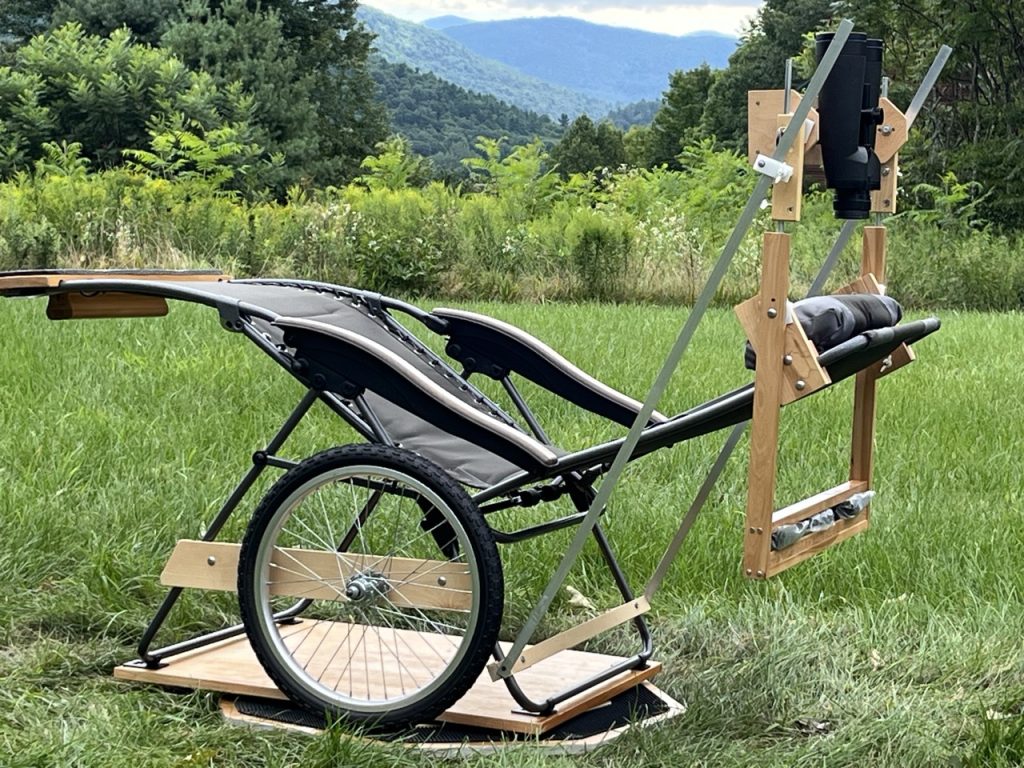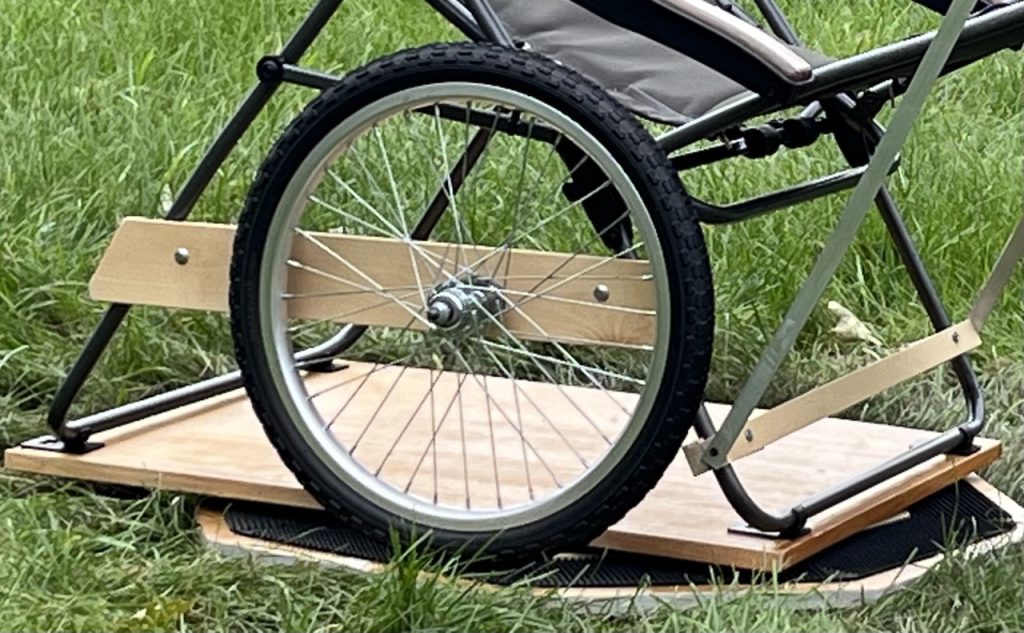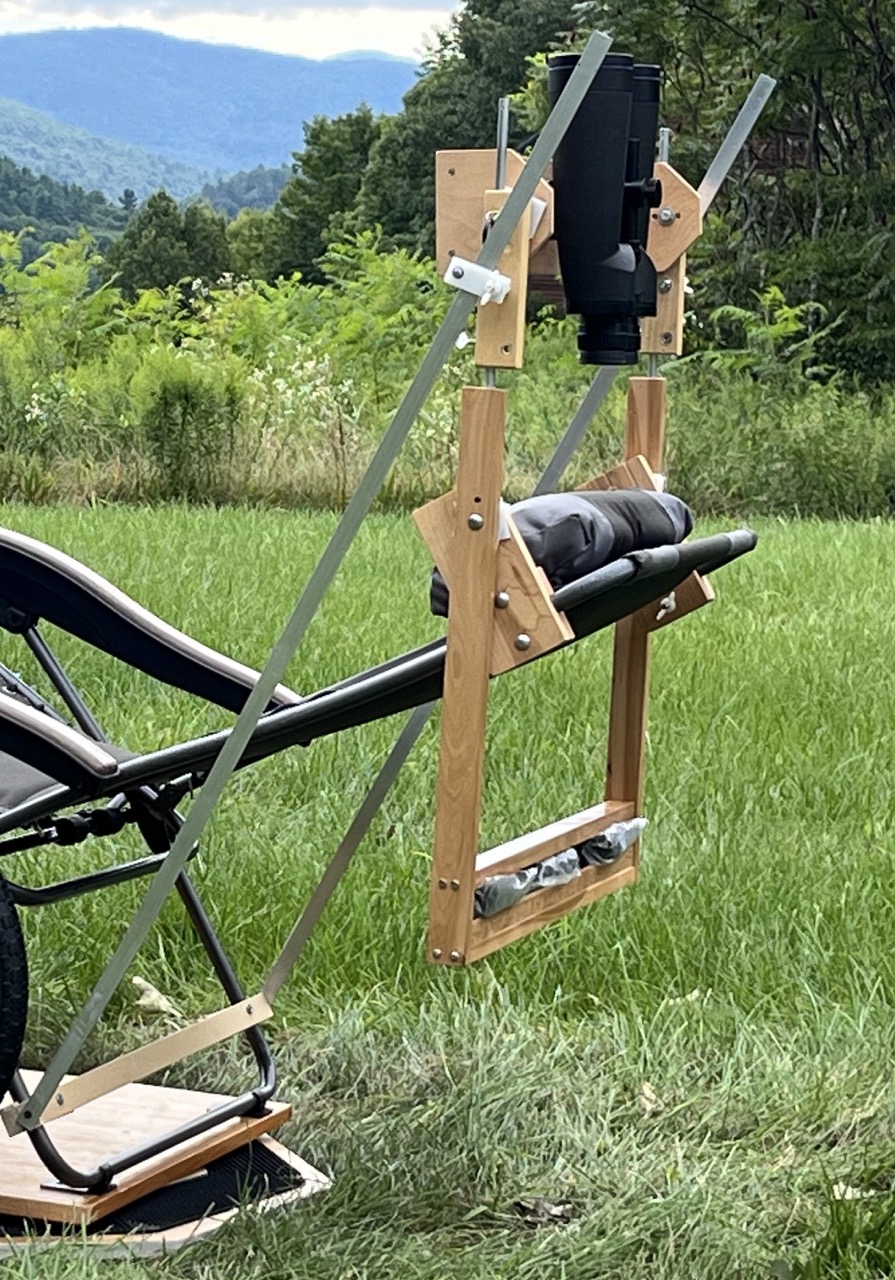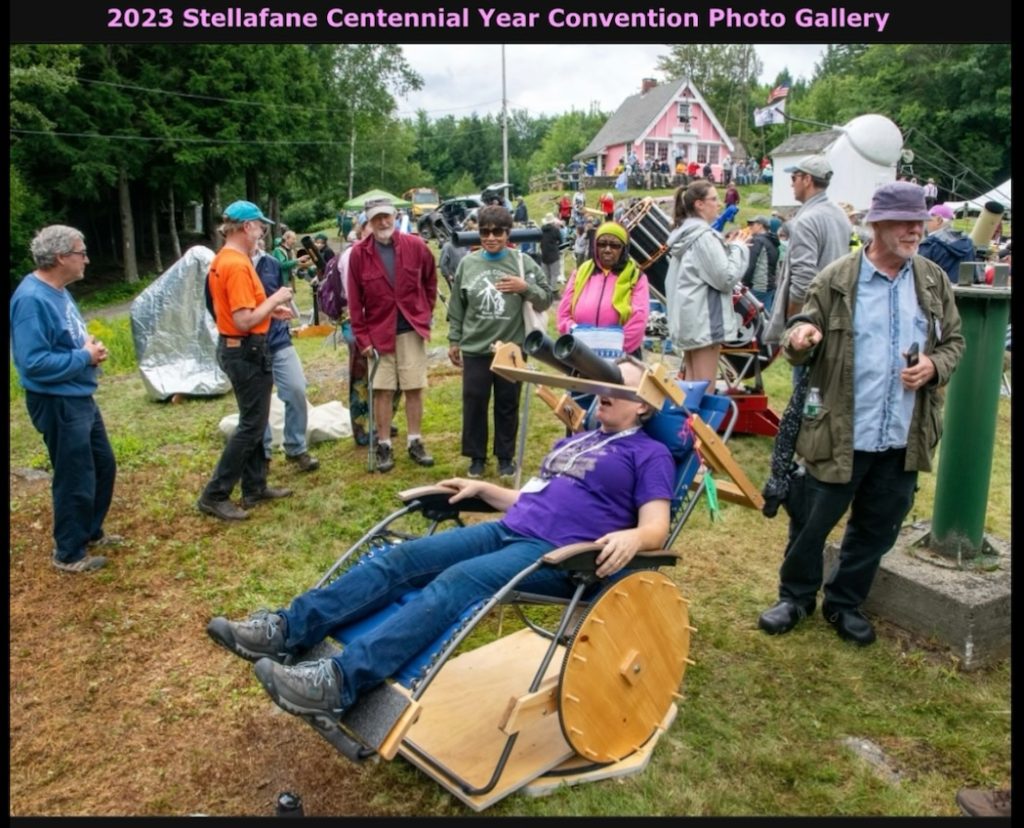Cruise the Milky Way with Comfort and Stability in a Custom Binocular Chair
It’s now possible to stargaze the full sky with comfort and stability, by using a proven easy-to-construct, low cost binocular chair. Just turn the azimuth drive wheel with one hand, while fine-tuning the elevation with the other hand. Enjoy full functionality compared to a tripod or parallelogram mount or virtually any other viewing method. Steady astronomy viewing of the entire sky for as long as you like, without the shaking and the neck pain.

We provide downloadable plans, so that you can easily build the components for attachment to your zero gravity chair, or other chair style. These straight forward and comprehensive plans cover parts acquisition, step-by-step construction and attachment to your chair. We have gone through two years of development, prototyping, testing, and user approval. The components will accommodate the dimensions of standard chairs, can be quickly attached to your chair, and will support mid-sized binoculars.
A Bino-Chair in Operation
Start by leaning back in your chair to gain some viewing elevation. The binocular holder follows along….
….. then slowly turn the azimuth drive wheel with one hand, while fine-tuning the elevation with the other hand. The binocular holder has a pivoting cradle, which optimizes positioning of the binoculars to your eyes. When you let your hands go, the viewing direction is maintained.
The chair tilts back to bring the binocular holder up very high. Then this holder, called the teeter, can be tilted up further. If you just slightly arch your neck, you can view straight up. The nape of your neck is supported with a large cushion. You can always shift the binoculars away from your eyes in order to look at an a star chart for example. When done, return the chair upright using a few pounds of leg pressure.
Component Plans
Our downloadable binocular chair component plans include those for Azimuth Control and for Elevation (Altitude) Control. They contain parts and materials sourcing, step-by-step construction guidelines, exploded parts diagrams, photos, and finally some assembly and testing guidelines. Both metric and imperial. The plans are found by clicking on the “Downloadable Plans” heading at the top of this page. Technical support is provided. Free 5-page samples taken from the introductions to the plans are also available in the “Downloadable Plans” area.
1. Azimuth Control:
Rotating Base and Drive Wheel
Your chair sits on a stable wide rotating base. Easy 360° panning is done with the hand-driven wheel. Used in combination with the elevation component, you have access to the entire sky.
The sturdy rotating base has two sections; one section just fits on top of the other. The base includes a large turntable bearing, a simple friction mechanism, a rubber track and leveling legs.
The azimuth setting can be continuously controlled with a light touch of the hand. There is no drift or bounce-back, because of the added friction. This also means that the ground doesn’t have to be perfectly level.
The drive wheel mount on the side of the chair conforms to the geometry of your chair’s frame, and self-adjusts to the required height off of the base track.

2. Elevation Control:
Teeter, Cradle, Stability Rods, Chair-front Counterweight
This provides stable and comfortable viewing all the way up to zenith. Begin setting the viewing elevation by simply tilting back the chair’s backrest. The teeter, mounted on the backrest, can be preset for user height and neck cushion thickness. The binoculars are balanced using adjustable weights at the rear of the teeter. The binoculars can be tilted up out of the way when getting into the chair, or when using a star chart.
At the front of the teeter is a binocular holder called the cradle. It holds the binoculars at their center of mass. This cradle has many benefits for quality viewing. It allows for finely positioning your eyes to the binoculars. This is especially helpful while making large changes in viewing elevation. Typically, when sweeping through the night sky, one moves the teeter and the cradle at the same time, together with one hand.
Stability rods are shown below attached to the cradle mounts on both sides. They help to reduce view drifting and any vibration.
Reclining chairs will use a counterweight at the front of the chair to compensate for the weight of the loaded teeter. This makes it easier to tilt the chair’s backrest.

Subscribe and receive a promo code
By submitting this short contact form, you will receive a 20% discount for use on the “Downloadable Plans” page. There is also an alternative 40% discount offer that you will receive after submitting this form. Your contact information will remain private and secure on this SSL certified site. Any profits are to be donated to a worthy astronomy non-profit (TBD). Your feedback is valuable as we continue to develop this completely novel product line. (Privacy Policy)
You may want to add contact@milkywaylounge.com to your contacts, or whitelist us, or check your spam folder after subscribing.

